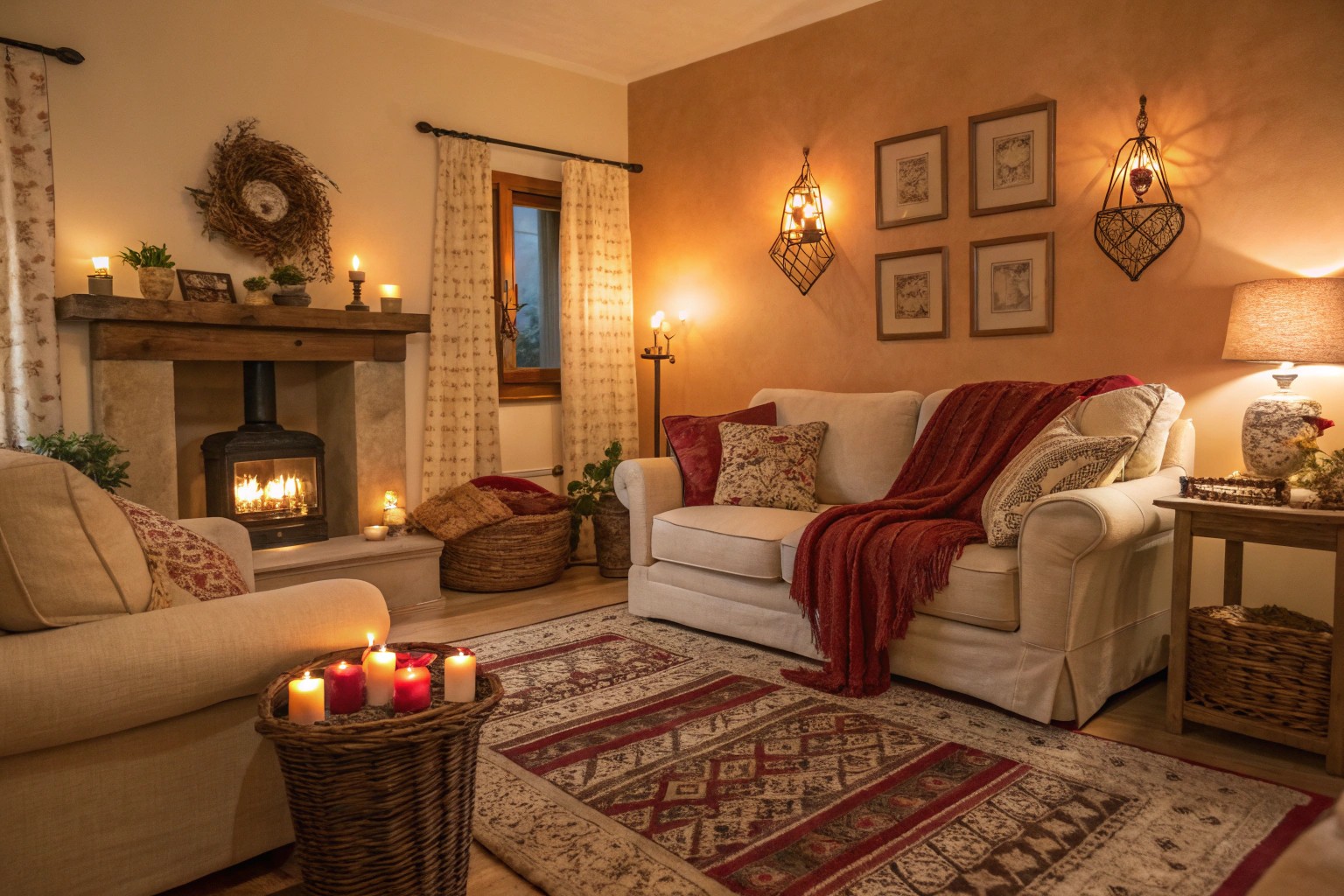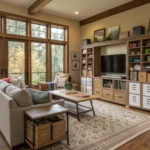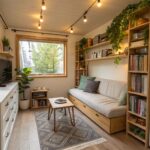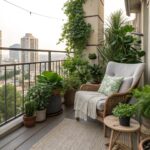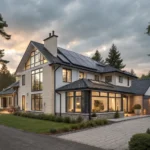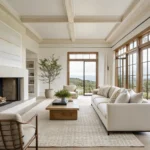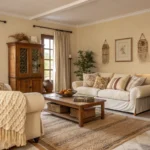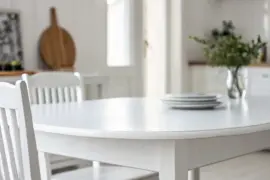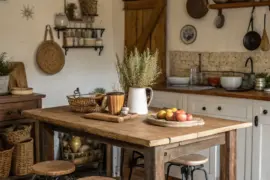Every home contains hidden potential—those forgotten corners, underutilized closets, and neglected storage rooms that could become your most cherished spaces. Whether you’re working with a windowless basement room or a cramped attic nook, the principles of thoughtful design can transform any overlooked area into a functional, beautiful retreat.
Assessing Your Hidden Potential
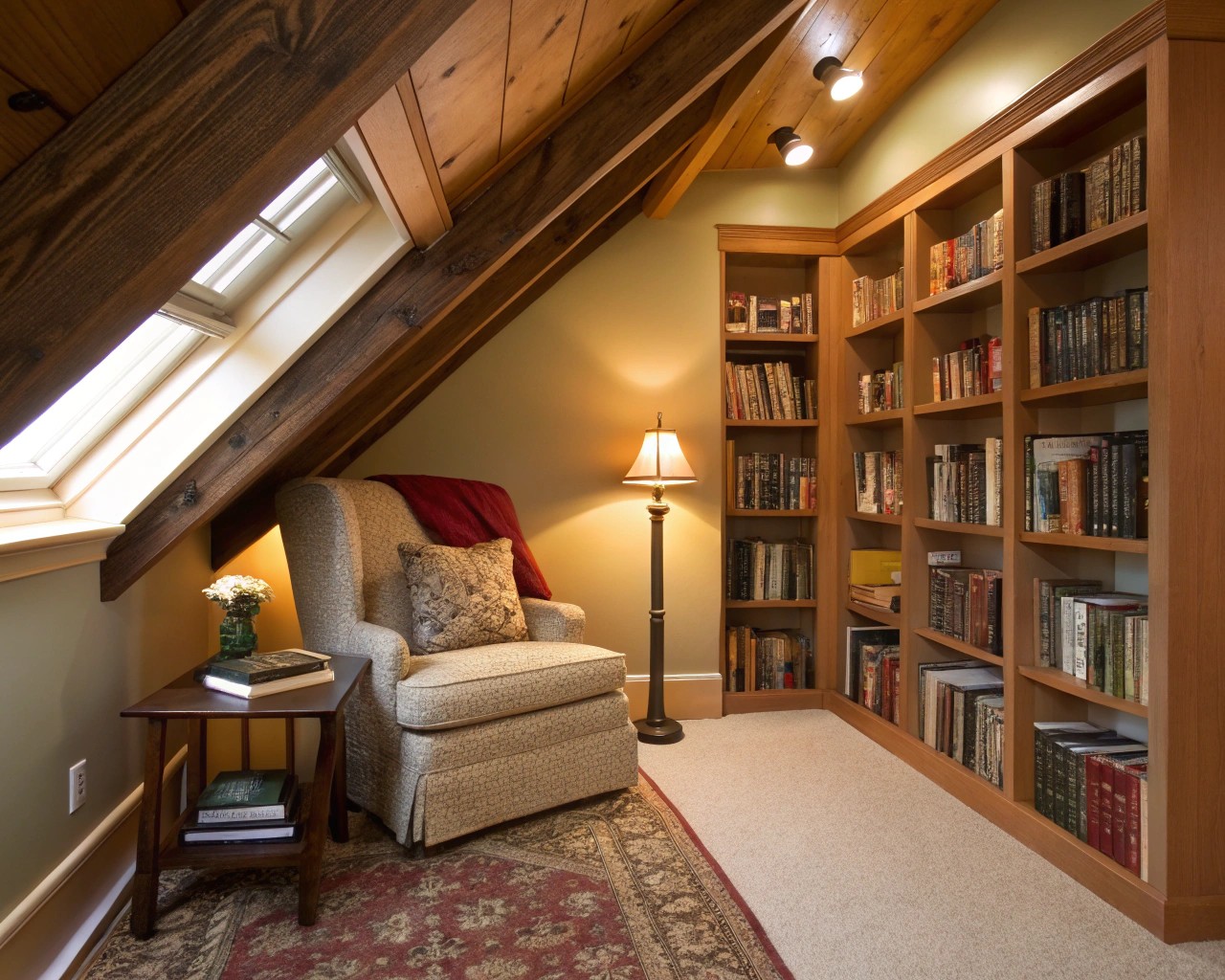
Before diving into any transformation, you need to evaluate what you’re working with. Start by conducting a thorough assessment of your unused spaces, noting their size, shape, and proximity to existing rooms. This initial evaluation will guide every decision that follows.
Key Assessment Factors:
- Structural integrity – Check for moisture issues, proper insulation, and ceiling height
- Access points – Consider how people will enter and move through the space
- Existing utilities – Note electrical outlets, plumbing, and HVAC connections
- Natural light sources – Identify windows or potential for adding them
- Noise considerations – Evaluate sound transmission from adjacent rooms
I’ve found that measuring awkward nooks and unusual angles during this phase saves considerable time later. Take detailed measurements of sloping ceilings, low spaces under eaves, and any architectural features that might impact your design.
The most successful transformations begin with clearly defined goals. Are you seeking additional storage, a quiet work retreat, or perhaps a cozy reading nook? Your intended use will determine everything from lighting requirements to ventilation needs.
Mastering Light in Challenging Spaces
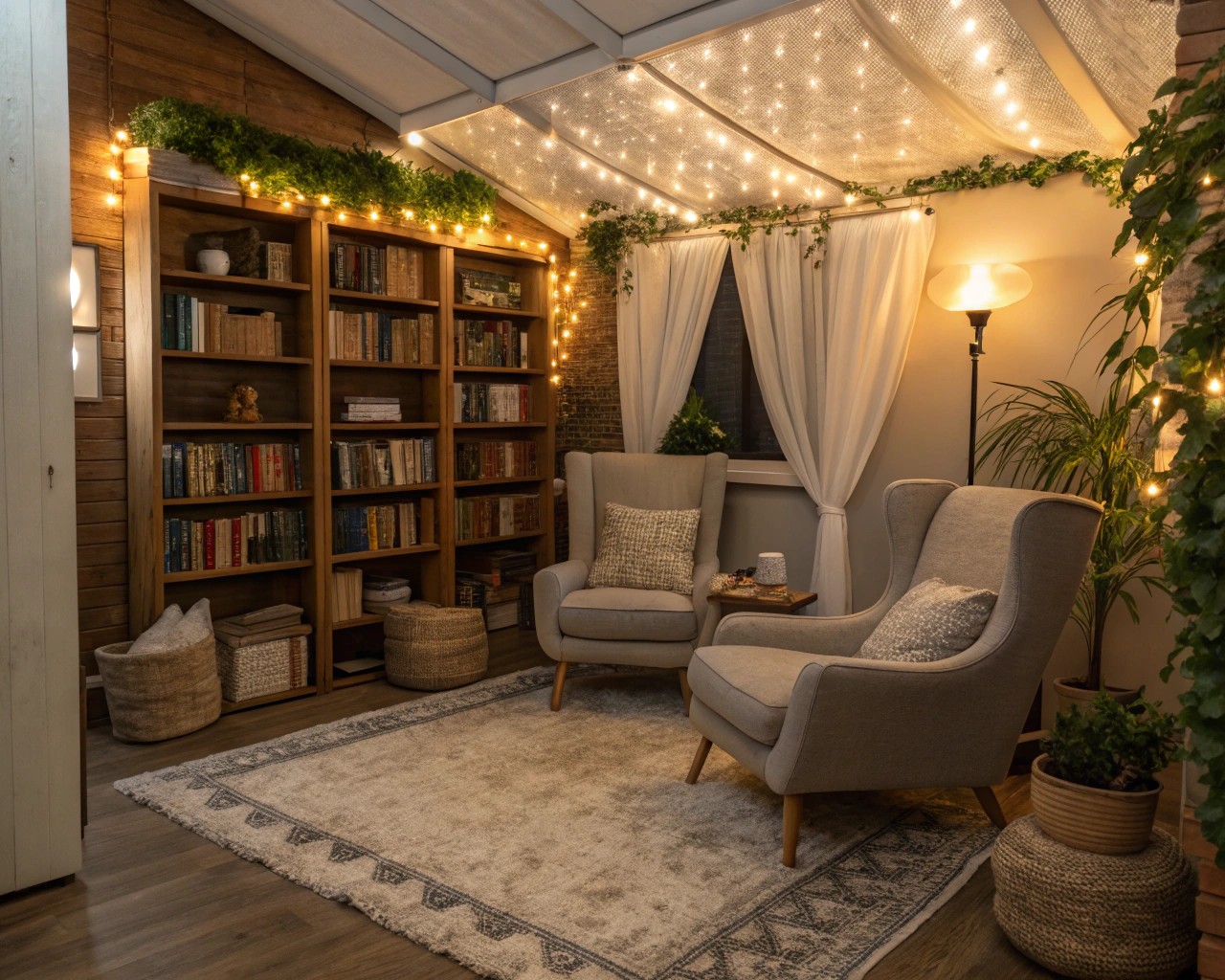
Lighting transforms small, enclosed spaces more dramatically than any other single element. The key lies in creating multiple light sources rather than relying on a single overhead fixture.
Layered Lighting Strategy
Ambient Lighting:
- Ceiling-mounted LED panels for general illumination
- Recessed lighting to maintain ceiling height
- Track lighting that can be angled toward specific areas
Task Lighting:
- Wall sconces positioned at appropriate heights for reading or work
- Under-cabinet LED strips for workspace illumination
- Pendant lights hung strategically to define zones
Accent Lighting:
- String lights to create warmth and visual interest
- LED strip lighting behind shelving or under stairs
- Color-changing bulbs for mood adjustment
When working with windowless rooms, aim for lighting that mimics natural daylight. Look for bulbs in the 5,000 to 6,000 Kelvin range, which closely resembles outdoor lighting conditions. This not only makes the space feel more connected to the outside world but also supports better mood and productivity.
Lighting Placement Guidelines:
| Room Function | Primary Lighting | Secondary Lighting | Accent Options |
|---|---|---|---|
| Home Office | Overhead LED panels | Desk lamp, wall sconces | Under-shelf strips |
| Reading Nook | Floor lamp, ceiling fixture | Wall-mounted reading light | String lights |
| Storage Room | Track lighting | Motion-activated strips | Corner uplighting |
| Workshop | High-intensity overhead | Task lighting at workbench | Safety lighting |
Solving Ventilation Challenges
Poor air circulation can quickly turn your soul space into a stuffy, uncomfortable environment. Windowless rooms require special attention to air quality and ventilation.
Ventilation Solutions for Enclosed Spaces
Mechanical Ventilation:
- Install exhaust fans connected to your HVAC system
- Consider portable air purifiers with HEPA filters
- Add ceiling fans to promote air circulation
Natural Air Flow:
- Create door undercuts to allow air movement when doors are closed
- Install transfer grilles in walls adjacent to conditioned spaces
- Use interior windows or pass-throughs to connect with naturally ventilated areas
Humidity Control:
- Deploy dehumidifiers in basement conversions
- Ensure proper insulation to prevent condensation
- Monitor humidity levels with digital hygrometers
The most effective approach often combines multiple strategies. In one recent storage room conversion, we installed both an exhaust fan and transfer grilles, which created a gentle but constant air exchange that kept the space fresh without creating uncomfortable drafts.
Design Principles for Compact Transformations
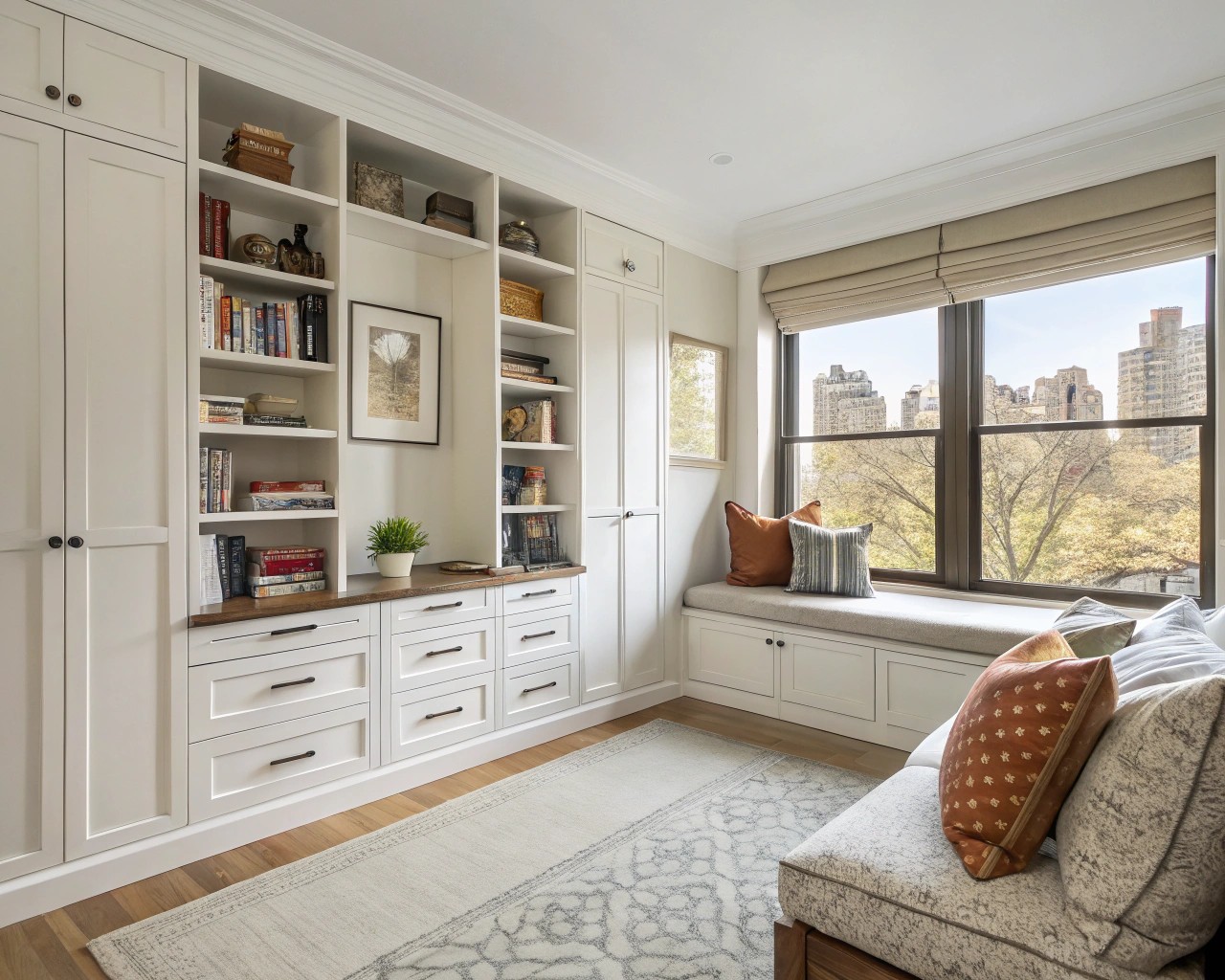
Small spaces demand different design approaches than their larger counterparts. The goal isn’t to make the space feel bigger—it’s to make it feel intentional and comfortable.
Scale and Proportion Strategies
Furniture Selection:
- Choose fewer, larger pieces rather than many small ones
- Opt for furniture with built-in storage capabilities
- Select pieces that serve multiple functions
Visual Weight Distribution:
- Mix large statement pieces with smaller accent items
- Use the vertical space effectively with tall storage solutions
- Create visual breathing room with transparent or reflective materials
One counterintuitive principle that consistently works: don’t be afraid of darker colors in small spaces. Deep, rich hues can create a cocooning effect that makes compact areas feel intentionally intimate rather than cramped.
Color Psychology for Small Spaces
Light and Neutral Palettes:
- Soft whites and warm grays for rooms with natural light
- Mushroom and flint tones for calming, sophisticated feels
- Graduated color scales to add subtle depth
Bold and Dramatic Choices:
- Obsidian green or nether red for atmospheric workspace
- Pompeian ash with bright accent colors for personality
- Deep grays and earthy browns for cozy retreats
Maximizing Storage While Maintaining Style
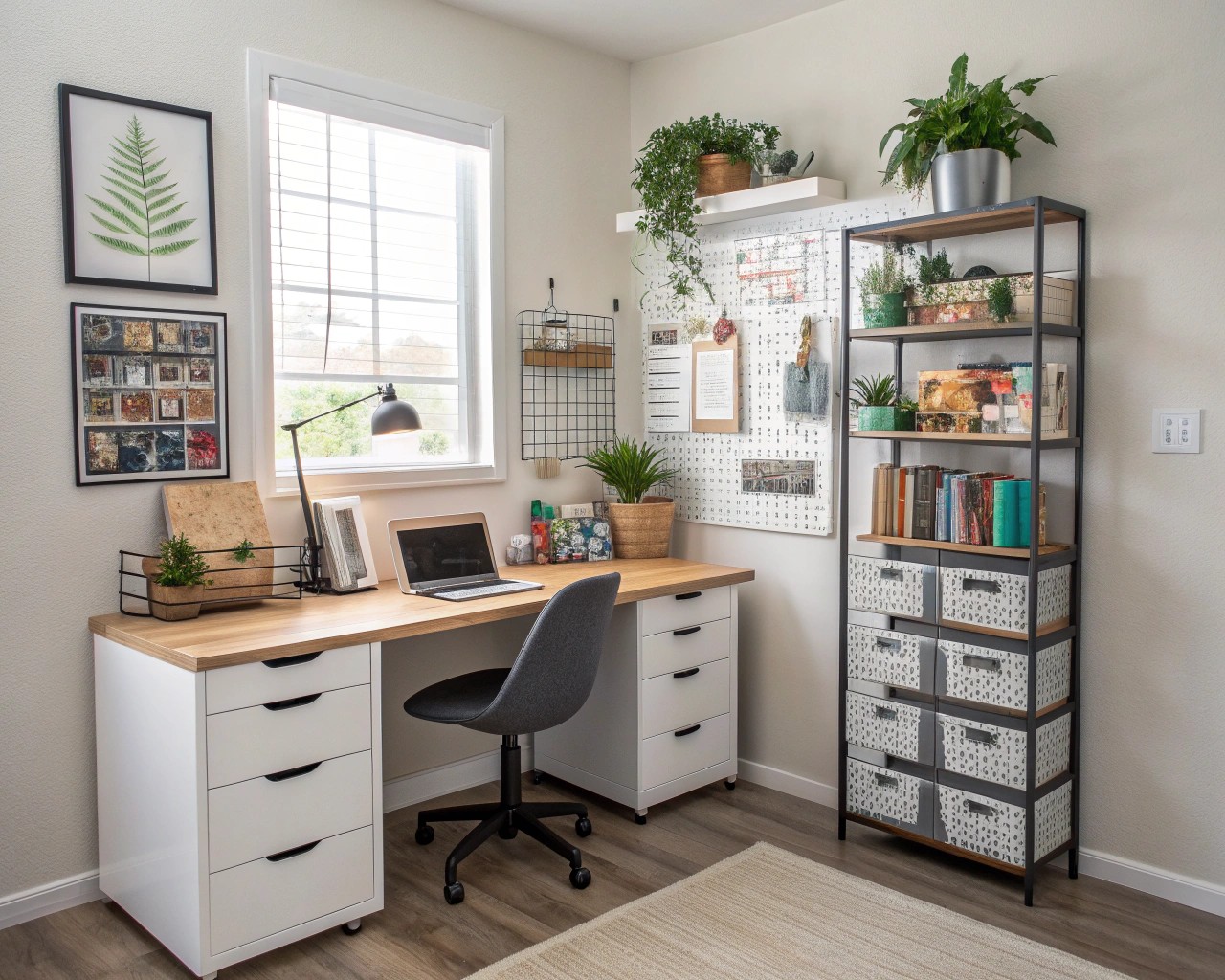
The best small space transformations seamlessly integrate storage with aesthetics. Every piece should serve both functional and visual purposes.
Creative Storage Solutions
Repurposed Items for Organization:
- Magazine files for clutch and wallet storage
- Wine racks mounted on walls for holding rolled items
- Paper towel holders for organizing belts and accessories
- Shower hooks as economical purse hangers
Built-in Storage Options:
- Custom shelving that fits under sloped ceilings
- Drawer systems that pull out from low eaves spaces
- Floor-to-ceiling storage walls with mixed open and closed sections
Multi-functional Furniture:
- Ottoman storage boxes that double as seating
- Lift-top coffee tables that serve as desks
- Bed frames with integrated storage compartments
Zone Creation Strategies
Creating distinct areas within a single small space makes it feel larger and more purposeful. This can be achieved through strategic furniture placement, area rugs, and lighting.
Effective Zoning Techniques:
- Use area rugs to define different functional areas
- Position furniture to create natural traffic patterns
- Install ceiling-mounted curtains for flexible room division
- Employ different lighting schemes for each zone
Specific Conversion Applications
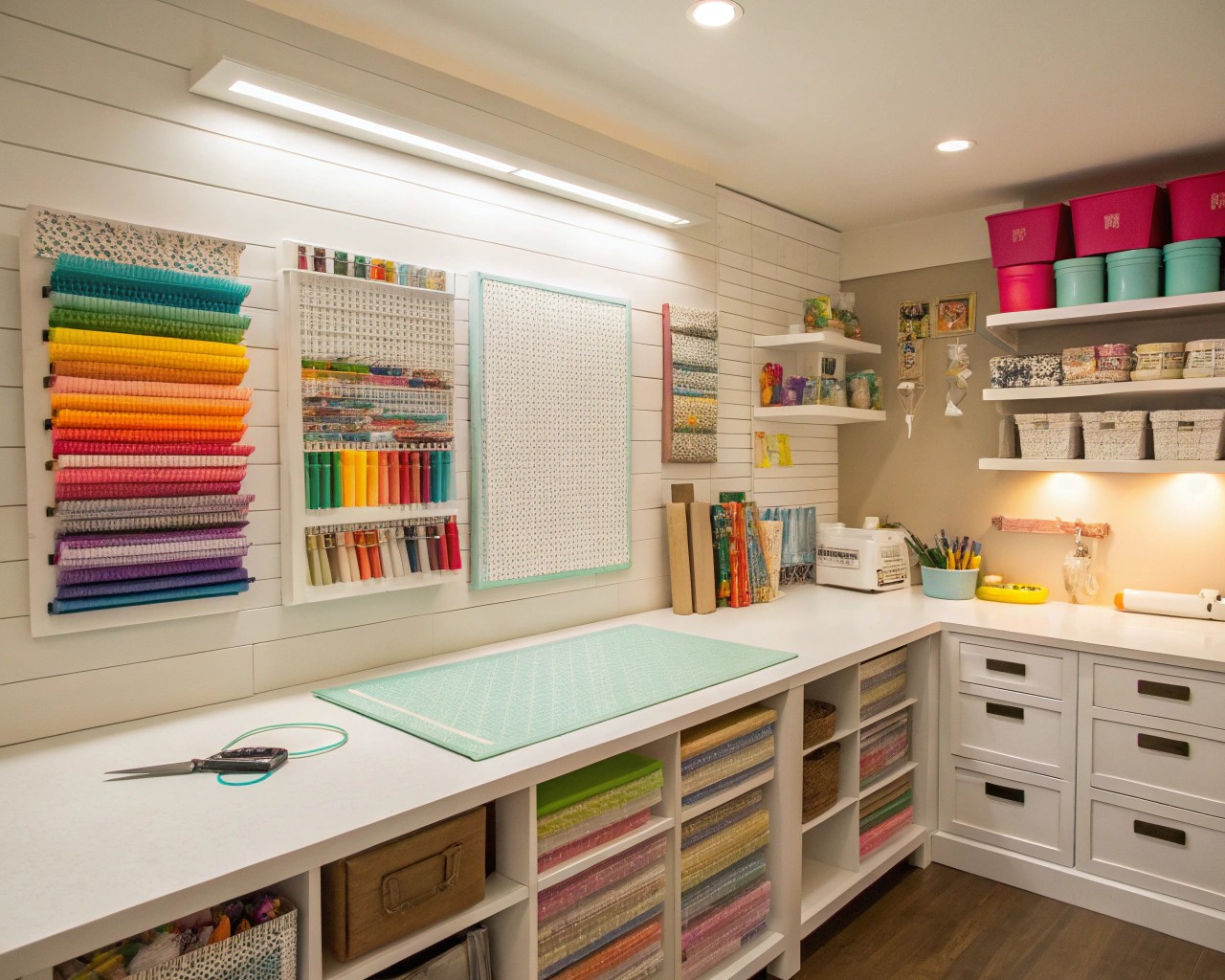
The Home Office Sanctuary
Converting a storage room into a home office requires careful attention to both functionality and comfort. Start with sound insulation if the room is located near high-traffic areas.
Essential Elements:
- Adequate task lighting positioned to minimize screen glare
- Proper ventilation to maintain alertness during long work sessions
- Sound absorption materials between ceiling joists
- A large whiteboard or magnetic wall for project planning
- Strategic placement of electrical outlets for equipment needs
The Creative Studio Space
Artists and crafters need different considerations than office workers. Focus on north-facing light sources when possible, or invest in full-spectrum lighting that won’t distort color perception.
Studio-Specific Features:
- Easy-to-clean flooring materials
- Abundant storage for supplies and works in progress
- Flexible lighting that can be adjusted for different tasks
- Proper ventilation for materials that produce fumes
- Work surfaces at appropriate heights for your medium
The Reading Retreat
A converted storage room can become the perfect reading nook with minimal investment but maximum impact on your daily life.
Reading Room Essentials:
- Comfortable seating positioned near good lighting
- Built-in bookshelves that maximize vertical space
- A small side table for beverages and reading glasses
- Soft textures like throw pillows and blankets
- Sound dampening materials to create a quiet environment
Technical Considerations and Safety
Electrical Requirements
Most storage room conversions require electrical upgrades to support their new functions. Plan for adequate outlets positioned where you’ll actually use them.
Electrical Planning Checklist:
- Calculate total electrical load for lighting and equipment
- Install GFCI outlets in basement or potentially damp areas
- Consider USB outlets for modern device charging needs
- Plan circuit capacity for high-draw items like space heaters or air purifiers
- Ensure proper grounding for safety
Building Code Compliance
Before beginning any conversion, check local building codes regarding:
- Minimum ceiling heights for habitable spaces
- Required egress windows for basement rooms
- Insulation requirements for comfort and energy efficiency
- Permit requirements for electrical and HVAC modifications
Finishing Touches That Make the Difference
The details that transform a converted storage room into a soul space often come at the end of the project. These finishing elements create the emotional connection that makes a space truly yours.
Personalizing Your Space
Sensory Elements:
- Incorporate plants that thrive in your lighting conditions
- Add textural elements through fabrics and natural materials
- Include artwork or photographs that inspire you
- Consider subtle scenting through candles or diffusers
Comfort Features:
- Install a small space heater or fan for climate control
- Add cushions or throws for physical comfort
- Include a small rug to warm cold floors
- Position a mirror to reflect light and create visual expansion
Maintenance and Evolution
The best converted spaces evolve with your needs. Design flexibility into your transformation so it can adapt over time.
Built-in Adaptability:
- Use modular storage systems that can be reconfigured
- Choose neutral base colors that work with changing decor
- Install adjustable shelving and lighting
- Plan for easy access to mechanical systems for maintenance
Making It Happen: Implementation Strategy
Start with the most critical elements—lighting, ventilation, and basic comfort—then add layers of functionality and style. This approach allows you to use the space quickly while continuing to refine it over time.
The most rewarding transformations happen when you trust the process and allow the space to reveal its intended purpose. Sometimes a room destined to be a home office insists on becoming an art studio instead. Listen to what the space is telling you, and you’ll create something far more meaningful than any predetermined plan.
Phase 1 Priorities:
- Address safety and building code requirements
- Install adequate lighting and ventilation
- Complete basic insulation and electrical work
Phase 2 Development:
- Add built-in storage and work surfaces
- Install finished flooring and wall treatments
- Configure furniture and major equipment
Phase 3 Refinement:
- Include decorative elements and personal touches
- Fine-tune lighting and storage organization
- Add comfort features and sensory elements
Remember that the goal isn’t perfection—it’s creating a space that serves your needs and brings you joy. The most successful storage room transformations become not just functional spaces, but places where you genuinely want to spend time. That’s when you know you’ve truly created a soul space from what was once just forgotten square footage.

